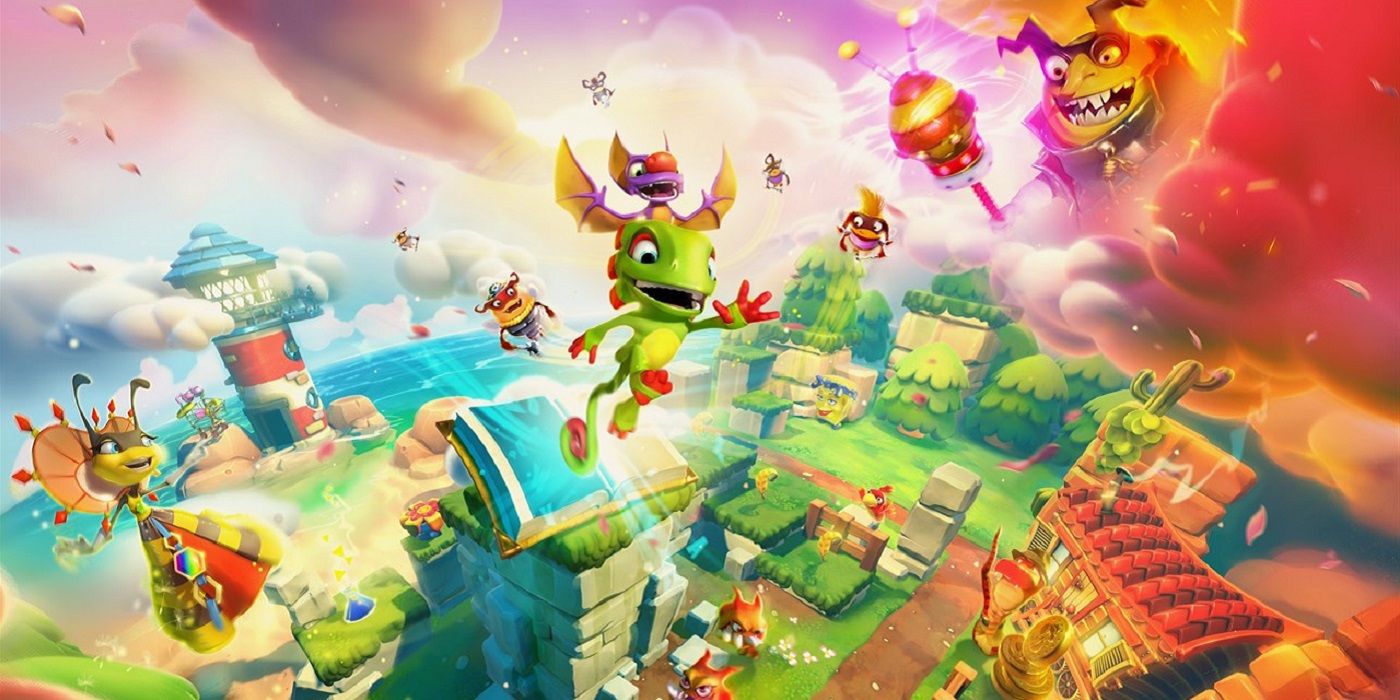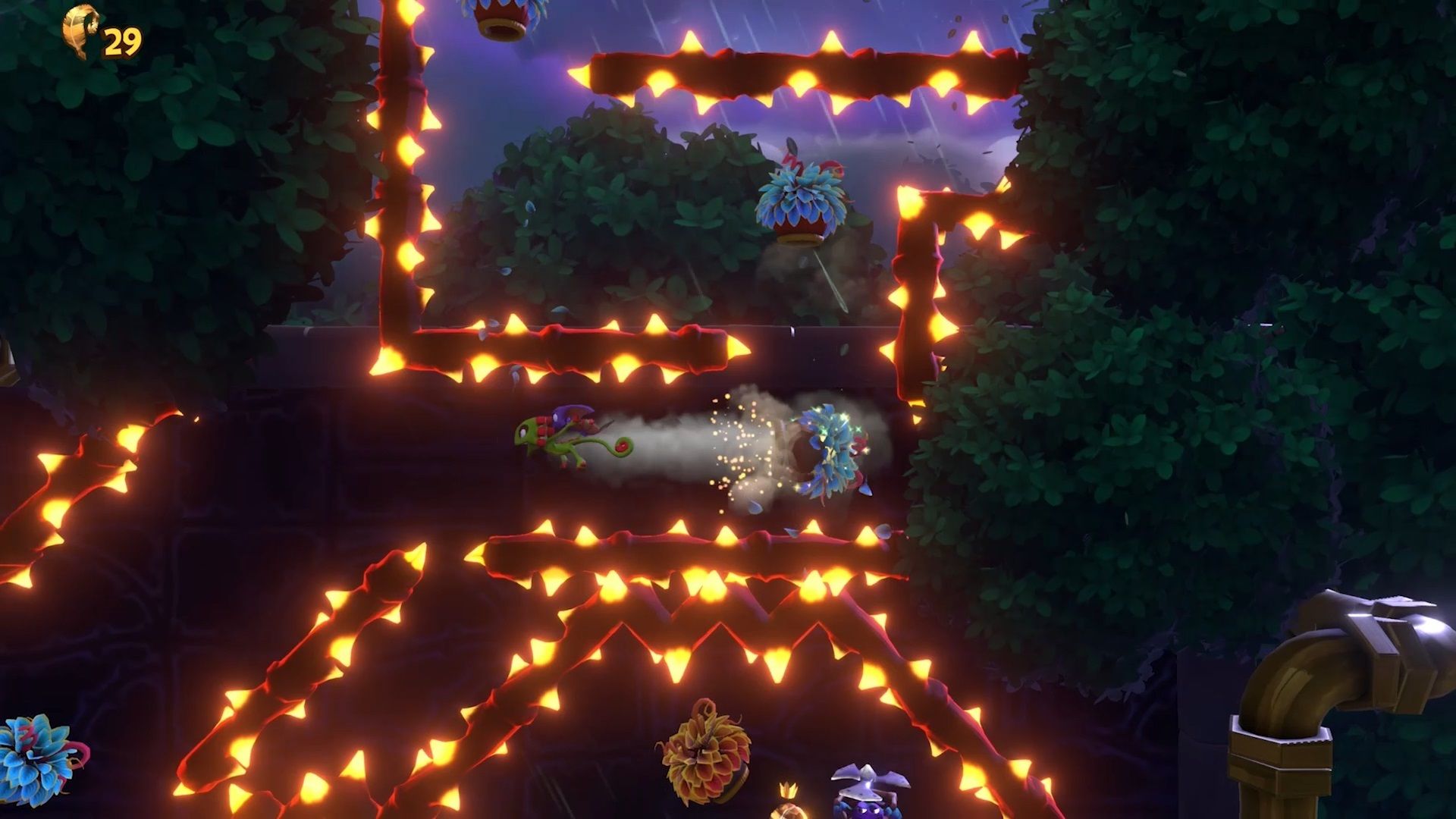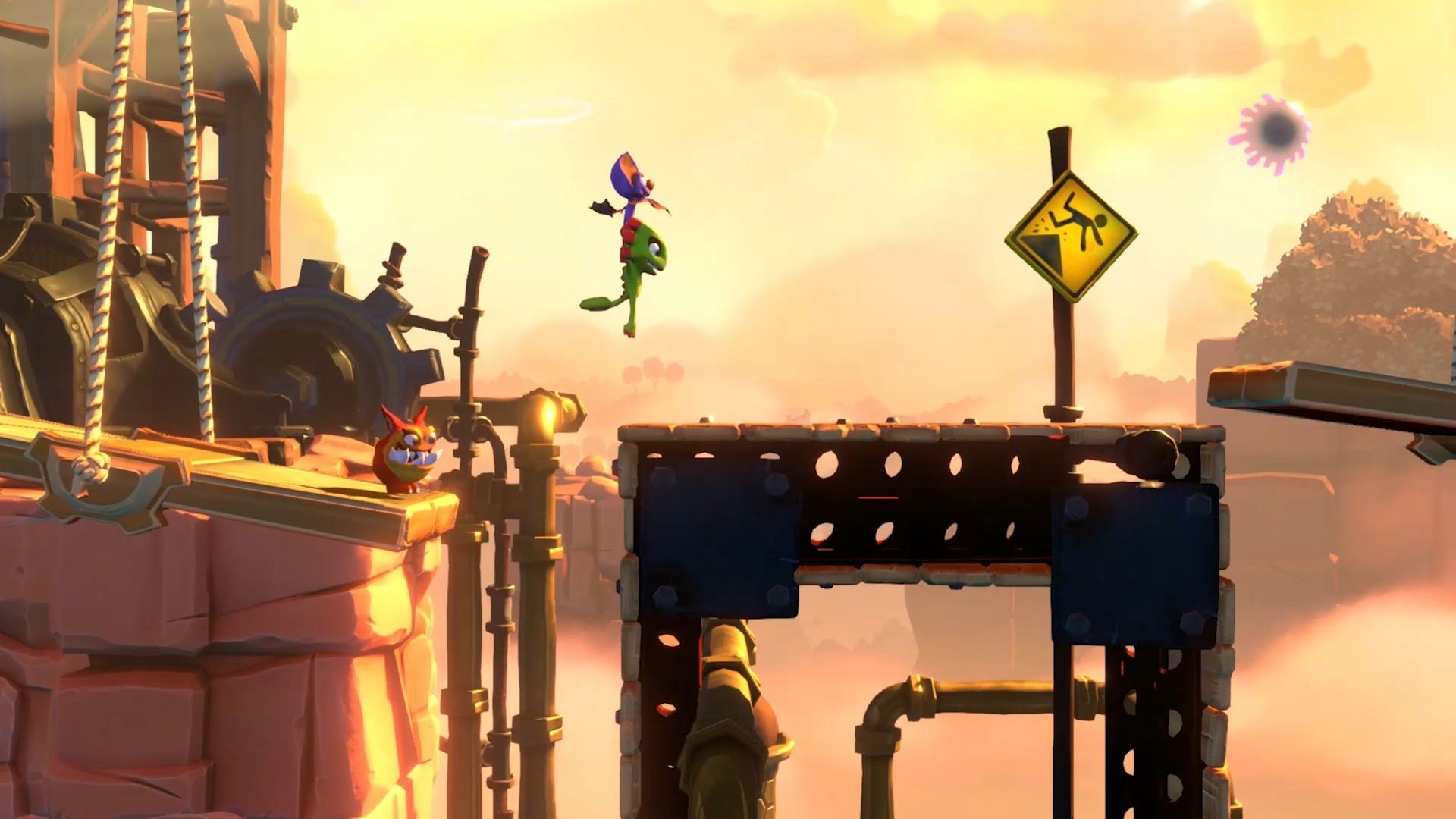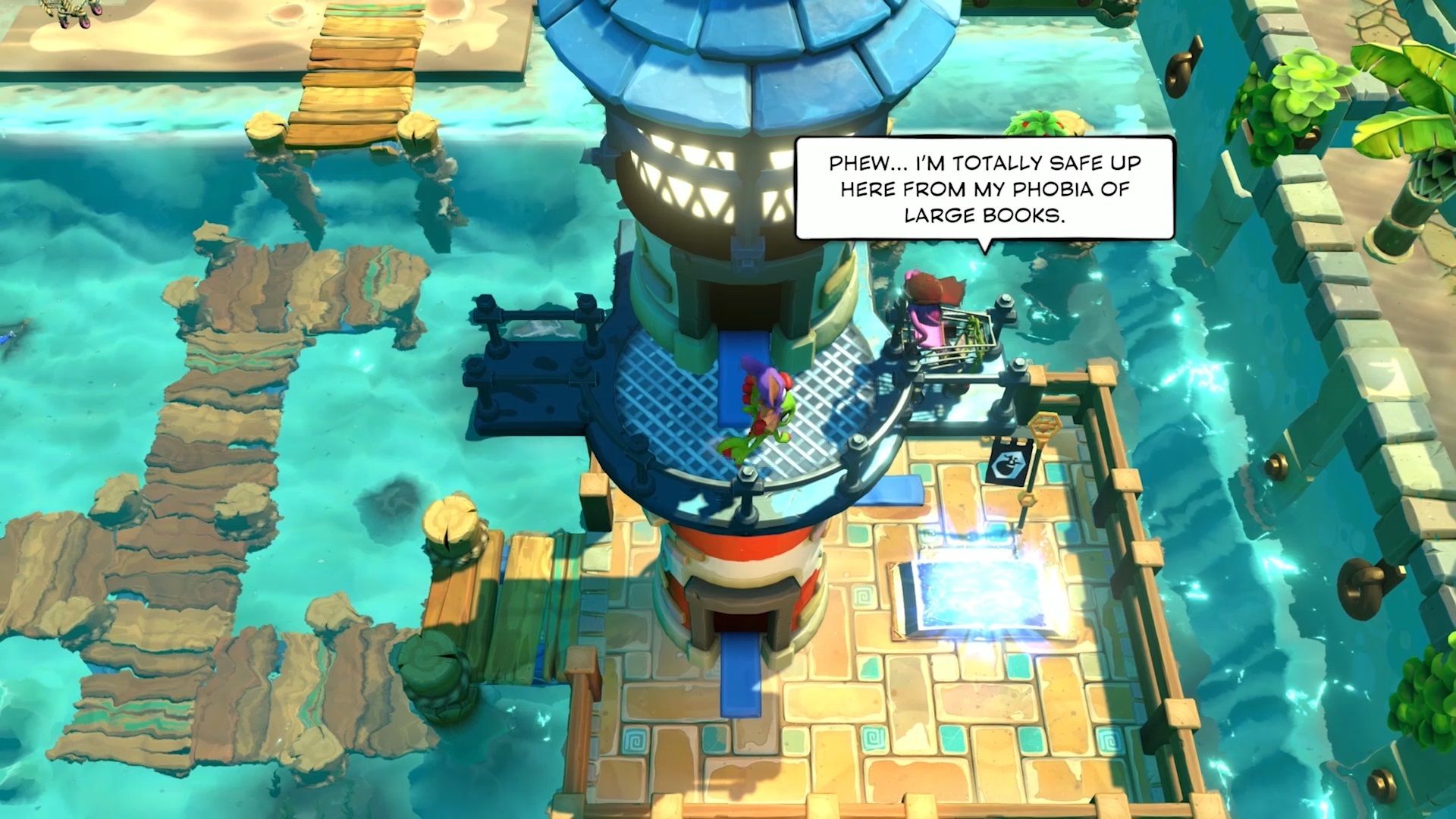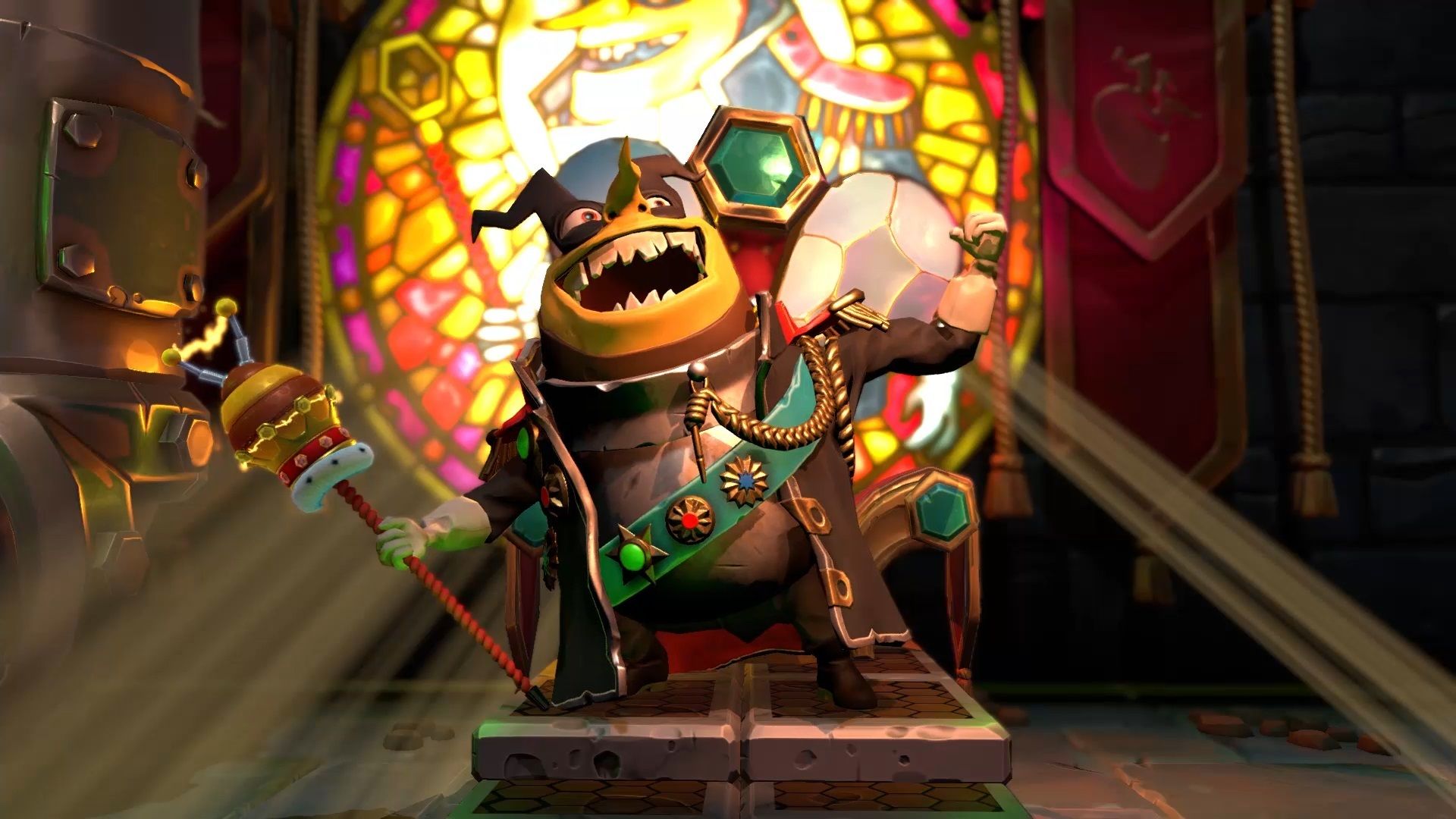Ever since Microsoft purchased Rare in the early 2000s, many of the studio's most popular IPs have been neglected. This includes the 3D platformer series Banjo-Kazooie, which hasn't had a proper entry since 2000's Banjo-Tooie. Former Rare developers took note of the fan demand for a new Banjo-Kazooie, and set to work on a spiritual successor called Yooka-Laylee, which smashed Kickstarter records. The final product was met with mixed reviews, but the studio has moved forward with the series regardless with Yooka-Laylee and the Impossible Lair.
Whereas the original Yooka-Laylee game was clearly meant to be a spiritual successor to Banjo-Kazooie, Yooka-Laylee and the Impossible Lair takes its cues from a different Rare title. Yooka-Laylee and the Impossible Lair is very similar to Donkey Kong Country, with everything from the music (which is often pretty great, by the way), to rolling into enemies, to launching the characters out of cannons that function exactly the same as Donkey Kong Country's barrels. Even the quills that players collect throughout the level are just the Donkey Kong Country bananas by a different name, and are laid out in a way that is highly reminiscent of those games.
Yooka-Laylee and the Impossible Lair takes the most inspiration from Donkey Kong Country, but it also has elements of the newer Rayman games, and even Yoshi's Island. Whenever Yooka takes a hit from an enemy, Laylee will start fluttering around wildly, and players have to retrieve her within a certain amount of time or risk losing her, which is similar to the baby Mario gimmick from the Yoshi's Island games. Though the difference is that if Laylee leaves, Yooka is able to continue the level, albeit with only one hit point.
Yooka-Laylee and the Impossible Lair is a 2.5D platformer for the most part, but it also plays like a Zelda game. The overworld is like one big level itself, filled with puzzles, secrets, and more. We found exploring the overworld and discovering its secrets to be fun and rewarding, and the mix of Zelda-like gameplay with more traditional platforming actually helps Yooka-Laylee and the Impossible Lair feel unique, even if it is shamelessly copying other games.
The overworld is where players find Tonics, which are another interesting idea in Yooka-Laylee and the Impossible Lair, and it's always fun to find new ones. Tonics can change up the Yooka-Laylee and the Impossible Lair experience by offering cosmetic changes, in addition to gameplay tweaks. For example, there is a Tonic that makes Yooka's head big, and another that makes him invincible for a longer period of time after taking a hit. On the flip side, some Tonics make the game more difficult, like the one that removes most of the checkpoints. Players are rewarded for using the difficulty-increasing Tonics because it gives them a quill multiplier, and on the flip side of that, they miss out on some quills if they decide to use the easier Tonics.
While quills in Yooka-Laylee and the Impossible Lair are largely the same as the bananas in the Donkey Kong Country games, they are more valuable, as they're used to unlock the Tonics that players collect. However, they're not the only currency in the game. Each level has five coins for players to find as well, which are primarily used to unlock Trowzer the Snake's "paywalls" and access new areas with more levels. Many collect-a-thon platformers struggle to make their currencies actually feel valuable, but Yooka-Laylee and the Impossible Lair pulls it off, making it worthwhile for players to go out of their way to collect as many quills as possible.
The "paywalls" that block players' progress can be annoying in that they sometimes force players to redo levels to get more coins, but they are a good example of the game's sharp sense of humor. Paywalls are clearly poking fun at the game industry's reliance on microtransactions, and the game has a cast of interesting characters that are all rather amusing. Yooka-Laylee and the Impossible Lair may take after Donkey Kong Country, but it retains the Banjo-Kazooie style of humor. It even pokes fun at itself and the mixed reception to the first game, which we found to be one of its funnier jokes.
But while Yooka-Laylee and the Impossible Lair may be self-aware enough to acknowledge that the first Yooka-Laylee game didn't exactly live up to expectations, it too has its shortcomings. The game only has 20 levels, with each level having a variant that makes it a little different. Players alter the levels themselves by solving puzzles in the overworld. For example, one level might transform into a water level if players manage to flood the area. Sometimes these level variants offer such different mechanics that they might as well be completely new stages, but other times the levels are too similar and it feels like padding. It doesn't help that, aesthetically, the levels all kind of look the same, which means none of them really stand out and they all sort of blend together.
Something else that may feel like it's padding the game's length is the way the final level plays out. The titular "Impossible Lair" is the last level of the game, and its gimmick is that players can attempt it any time they want. They can make it easier by completing levels to collect bees, which act as extra hit points for Yooka and Laylee, with a total of 48 bees to find in the game. This means that players can try the Impossible Lair with up to 50 hit points to their name (counting Yooka and Laylee), but even with all that extra health, it's still very challenging.
The Impossible Lair is a neat idea. However, it feels like padding because, by its design, players will be replaying huge sections of it repeatedly in their attempt to get to the final boss. This means repeating boring, Koopaling-esque boss fights and redoing the same platforming challenges over and over again. It becomes tedious very quickly, especially when it comes to the dull, unimaginative boss fights.
It doesn't help that the platforming itself isn't quite as precise as it could be. The platforming in Yooka-Laylee and the Impossible Lair feels slippery, with Yooka often moving forward a bit more than the player would expect after rolling/jump combos, which are required in many parts of the game. This makes some of the more difficult levels, and the Impossible Lair especially, quite frustrating at times.
While the platforming feels a little off, the game otherwise runs quite impressively. Yooka-Laylee and the Impossible Lair maintains a consistent 60 frames per second, and everything is smooth, well-animated, and just generally looks great.
That being said, the game does suffer from some notable technical problems that we ran into during our time with it. There were times when we tried to retrieve Laylee after getting hit, but the bat wouldn't return to us. Another notable bug forced us to just die repeatedly until the game let us skip a section, as there was a platform that was seemingly stuck in the background and wouldn't let us jump onto it so that we could continue properly.
These bugs and the small amount of content make Yooka-Laylee and the Impossible Lair feel a bit rushed. The levels mostly all look the same, the alternate stages feel like padding, and the Impossible Lair gimmick is definitely going to be divisive for platforming fans. Its biggest issue, though, is that the platforming isn't nearly as precise as the games that inspired it. It has enough unique ideas that some platforming fans may still want to check it out after a price drop, but don't expect to be blown away.
Yooka-Laylee and the Impossible Lair launches on October 8 for PC, PS4, Switch, and Xbox One. Game Rant was provided a PS4 code for this review.

